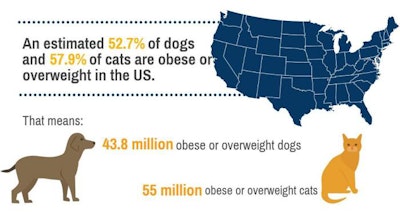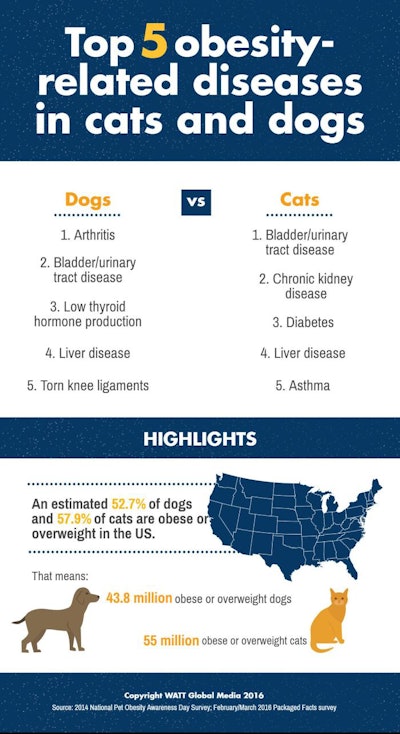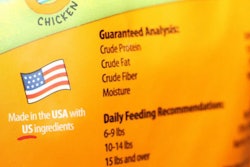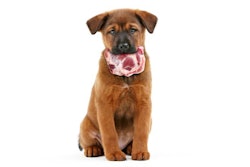
Cat and dog obesity rates continue to rise, as do sales of pet food or nutrition products related to weight, reported Petfood Industry, while specialty and therapeutic formulations address the health problems that result from pet obesity.
Specialty weight-management pet food
Overweight and obese pets are prone to many health conditions, several of which the pet food industry is addressing with specialty, therapeutic or weight-management formulas. Arthritis, bladder and urinary tract health, kidney health and liver health are all obesity-related health problems for which specialty dog and cat food formulations exist. For a list of the top five obesity-related health problems in dogs and cats, see the infographic below.
Increasing sales of weight-management pet foods
The percentage of dog owners who strongly agree that they buy weight-management pet foods has more than doubled from 2014 to 2016, according to data from Packaged Facts National Pet Owner Surveys. The percentage increased from 11 percent to 25 percent.
The percentage of cat owners who strongly agree that they buy weight-management pet foods increased even more from 9 percent in 2014 to 22 percent in 2016.
Formulating specialty, therapeutic and weight-management pet foods
For pet food industry professionals, formulation of weight-management pet foods may require special ingredients. For example, novel proteins might be able to help fight the obesity epidemic, according to Mark J. Mendal, founder of Pet Proteins, who spoke at Petfood Forum 2016. Venison, for example, has a lower calorie and fat content than conventional proteins, such as beef.
Beans can serve as a safe ingredient in formulas for overweight dogs, according to research published in the Journal of Applied Animal Nutrition. The results showed that dogs were able to utilize energy stored in bean-based diets at similar levels to the conventional kibble.
Obesity increasing beyond overweight
According to the Association for Pet Obesity Prevention’s (APOP) 2014 National Pet Obesity Awareness Day Survey (released in 2015), an estimated 52.7 percent of dogs and 57.9 percent of cats are obese or overweight in the US—which equates to 43.8 million dogs and 55 million cats. Of these animals, 17.6 percent of dogs (13.9 million) and 28.1 percent of cats (26.2 million) are obese.
Dog and cat obesity rates are growing faster than the overall trend towards being overweight, said the founder of APOP, Ernie Ward, DVM.
“The most startling and concerning finding, over the past decades, is the increase in the number of obese pets, specifically cats,” Ward said. “It’s not that the overall figure has dramatically increased, but the number of obese dogs and cats has really outpaced the overweight. We’re seeing a higher percentage of clinically obese pets.”


















